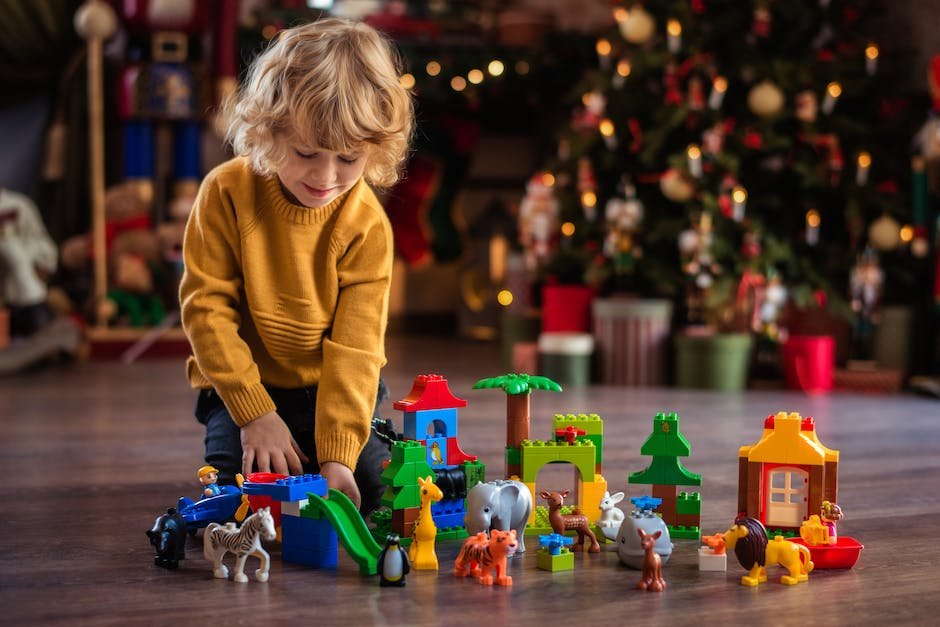
A deep-seated comprehension of Autism is a crucial constituent in sculpting efficacious parenting stratagems that lead to a significant impact in the lives of children with Autism. Handling this unique situation transcends common misconceptions and places substantial importance on the individuality of each child, factoring in their specific nuances and distinct position on the Autism spectrum. Meanwhile, it also involves the design and implementation of practical strategies, ranging from fostering social skills to promoting independent habits. Efforts towards forging a supportive environment that caters to the comfort and overall growth of these children come into play as well, ensuring their sense of security and stimulation.
Understanding Autism
Embracing the Nuances of Autism: Tips for Understanding and Support
Autism Spectrum Disorder, often simply referred to as Autism, presents unique challenges and rewards for families. Each autistic child is wonderfully unique, displaying a range of different strengths, preferences, and needs. Understanding the intricacies of autism can seem daunting at first, but it is deeply rooted in respect and empathy for the individual’s unique perspective on the world.
The nature of Autism implies a broad spectrum, meaning each child with Autism will experience the world in a unique way. This wonderful variety can make it seemingly complex to understand. Yet, shifting the focus from attempting to fit the child into society’s mold to appreciating their individuality can create an environment of growth and acceptance.
To better comprehend the nuances of Autism, let’s first dive into some general understanding. Autism, often identifiable in early childhood, impacts a person’s social interaction, communication and can be associated with repetitive behaviors. It exists on a spectrum, which implies variability in the way it manifests, ranging from mild to severe.
- Acceptance and openness
- Consistent support
- Communication
- Educational engagement
- Empowerment
Fostering an environment of acceptance and openness is the first step to better understanding Autism. Recognizing that every child is unique and experiencing the world in their own way is crucial. Understand that their behavior isn’t intending to cause difficulty, but is a means of expressing their feelings or coping with overwhelming situations.
Supporting an autistic child often means providing consistent routines and creating a comforting environment. Spontaneous changes can lead to anxiety and distress. When unavoidable, preparing the child ahead of time can help them handle this change better. Visual aids like social stories and pictorial schedules can be helpful tools in assisting an autistic child in understanding their daily routines.
Communication is one of the key areas which can vary greatly with Autism. While some children might have advanced or sophisticated speech, others might struggle with verbal communication entirely. Embrace alternative modes of communication as needed – this might include sign language, visual aids, or electronic communication devices. Be patient and don’t rush them – a calm approach can make a significant difference.
Engaging them in activities and education styles that accommodate their learning style is a great approach. Sensory-based activities, for instance, can be very appealing and therapeutic for children on the spectrum. Interactive learning games or gentle art-based activities can also prove successful.
Empowerment is crucial. Educating siblings, peers, and community members about Autism can help foster a supportive environment. Encourage inclusivity, address common misconceptions, and pave the way for understanding.
Understanding Autism goes beyond medical diagnosis – it involves changing attitudes and fostering acceptance. Each child is wonderfully unique, with a distinctive way of sensing, processing, and interacting with the world. Encourage their individuality, acknowledge their strengths, and support their needs. After all, it’s about embracing those wonderful differences that make each autistic child beautifully unique.

Practical Tips for Autism Parenting
Tried-and-True Practical Parenting Tips for Children with Autism
Navigating the world of parenting can be a challenging journey, even more so when you’re parenting a child on the autism spectrum. Every child is unique and wonderful, autism is just one facet of their complex character. Here are a handful of tried and true insights from fellow parents to help lessen the learning curve and enrich your special journey.
- Empowering through Independence: Children with autism have the ability and the right to make decisions about their day-to-day activities. Whether it’s choosing what to wear in the morning or picking a bedtime story, giving them the power of choice can foster their sense of independence and self-worth.
- Building a Safe and Soothing Space: Often, children with autism are hypersensitive to their surroundings. By creating an organized, quiet, and predictable environment at home, parents can provide a calming retreat from the sensory overload of the outside world.
- Investing in Visual Aids: Visual aids such as charts, calendars, and social stories can assist children with autism. Visual cues can provide a clear, concise way to understand what’s happening next, thereby reducing anxiety about unexpected changes.
- Focus on Non-Verbal Communication: Not all communication comes from words. Facial expressions, gestures, and even touch can help bridge the communication gap. Pay attention to these non-verbal cues which can often signal your child’s preferences, discomforts, or interest in specific activities.
- Customized Learning Strategies: Each child with autism has a unique learning style. For some, it might be kinesthetic (learn by doing), for others, it could be more visual or auditory. Identify their preferred method of learning and use it to make education more enjoyable and effective.
- Exploring Therapeutic Strategies and Support: There are different therapeutic approaches like Occupational Therapy, Speech and Language Therapy, Applied Behavior Analysis (ABA), and even Equine Therapy that have shown unwavering success for children with autism. Consulting with healthcare professionals can help determine which strategy is best suited for your child.
- Never Underestimate the Power of Patience: Parenting a child with autism doesn’t come with a manual, it comes with a child who teaches you patience. This journey is a marathon, not a sprint. Celebrate small victories, and remember that tiny steps can lead to enormous progress over time.
- Embrace Self-Care: As a parent, taking care of yourself is essential. You can’t pour from an empty cup. By ensuring your own health- mentally, physically, and emotionally, you can be there for your child in the best possible way.
Remember, there’s no one-size-fits-all approach to parenting. It’s an art, fuelled by knowledge, understanding, and above all, unconditional love. With these tips in your toolkit, the journey through autism parenting can be not just manageable, but also incredibly rewarding.

Finding Professional Support and Resources
Discovering Resources for Autism Parenting
Raising a child with autism is a unique journey, one that can be filled with both incredible rewards and unexpected challenges. Having separated the myths from realities and underscored the joy of unique differences, our hearts are open to embracing the support that communities offer. The journey might seem daunting at times, but remember: it is not a road to traverse alone. So, where can you turn to get necessary help and resources for autism parenting? Here are some key strategies, lifelines, and touchstones you’ll be grateful for.
First and foremost, consider reaching out to local and national autism organizations. In essence, groups like Autism Society of America or Autism Speaks are gold mines of reliable information and resources. They connect families to local chapters, support groups, and various events, serving as a hub for experts and other parents who share this journey.
Blackboard or star charts may be quaintly old school, but online forums and social media groups breathe new life into the community building spirit. They provide 24/7 support from a global network of parents who understand autism’s unique demands. Online platforms like Autism Parenting Magazine’s forum and the MyAutismTeam social network offer insights, advice and comfort in a non-judgmental, supportive environment.
Professional help, although sometimes challenging to access, can make a significant difference. Occupational therapists, special education teachers, and pediatric neurologists amongst others are allies in navigating this journey. Don’t shy away from leveraging their expertise on everything from leveraging visual aids to honing the power of patience.
Sometimes, it’s not about an expert, but rather a safe space to vent frustrations, share joys and seek advice from people on the same journey. For this, look no further than face-to-face support groups. These heartwarming gatherings forge bonds that help make parenthood, with its twist and turns, a less solitary journey.
When it comes to navigating the educational dedication required, there’s no need to reinvent the wheel. A plethora of institutional and governmental resources – like the Individuals with Disabilities Education Act, National Autism Association’s Give A Voice Program, or your local school district’s special needs department – can provide guidance and services you may need.
Last but not least, self-care is central to your journey as a parent. It is from a state of personal wellbeing that we can offer the most effective support to our children. So, take advantage of online courses, advice columns, and webinars focused on the caregiver’s wellbeing.
In sum, resources for autism parenting are readily available, only a phone call, a click, or a short drive away. The variety of support available – from expert care to parent networks, from organizational offerings to educational resources – provide an ecosystem of humanity and expertise that equips us to give our best to our uniquely-wired loved ones. So, reach out, dive in, and let the power of community enrich your rewarding journey of autism parenting.

Building Autism-Friendly Environment
Creating an optimized environment for a child living with autism requires a blend of strategies tailored to cater to their specific needs. Tailored to ensure their growth both academically and personally, these strategies don’t need to seem daunting or expensive. They can be simple, affordable, and most importantly, effective. Let’s delve into this important topic!
We’ll commence this discussion with the encouraging concept of self-expression. Inviting your child to engage in activities they love can significantly enhance their comfort and, as a result, their overall disposition. Encourage hobbies, whether it’s drawing, taking nature walks, or playing with building blocks. Being supportive of their choices can boost their self-esteem drastically, ensuring they feel cherished just as they are.
Next, let’s consider sensory sensitivity. Many children with autism often experience heightened sensitivity to noises, tastes, and textures. Maintaining an orderly home, filtering excessive noise, and regulating the temperatures are ways to provide a comparatively serene environment that can truly make a difference.
Let’s not forget the importance of dietary habits on a child’s well being. Offering nutritious food has a prominent impact on a child’s physical growth and mental development. Opt for diets rich in Omega-3 fatty acids, like fish or chia seeds, which are known for their brain-boosting properties.
Involving your child in household tasks is another beneficial strategy. This can foster a sense of responsibility and independence. Simple tasks like setting the table, watering plants, or sorting laundry can help a child with autism understand household dynamics and routines better.
Building social skills is equally important. Playdates, family gatherings, or even having them interact with visiting repair workers can offer opportunities to improve confidence in social settings. Role-playing exercises at home can also aid in cultivating these skills.
On a similar note, fostering a collaborative relationship with your child’s teachers and therapists creates a bridge between home and school, ensuring a seamless continuation of routines and practices. Regular meetings and conversations allow you to be aware of your child’s progress and to understand areas that need attention.
Don’t forget about the power of tech! Assistive technology – like text to speech devices, apps designed for children with autism, or even simple timers – can provide structure and security, easing daily living experiences for your child.
And lastly, ask for help when you need it. The saying “it takes a village to raise a child” finds particular relevance here. Whether reaching out to friends, other parents in similar situations, or professional counselors, don’t hesitate to seek support. Remember, in strengthening your own state of well-being, you are contributing to a nurturing environment for your child’s growth, too.
Maintaining a nurturing environment for a child on the autism spectrum is no easy feat, but it certainly is a rewarding journey. Embrace the challenge, and remember, you aren’t alone on this journey. Discovering new ways to navigate parenthood can be an adventure. And as you create that stimulating environment at home, you’re paving your child’s path to growing steadily, comfortably, and most importantly, happily.

Ultimately, Autism parenting in 2023 is an enlightened landscape where understanding, practical strategies, professional support, and a conducive environment intertwine to create a sustainable impact on the lives of children with Autism. It demands a considerable degree of effort, but being informed and proactive can transform countless challenges into rewarding success. With the right approach, resources, and dedication, parents and caregivers can undoubtedly make a meaningful difference in guiding their children to get the greatest joy and fulfillment from their lives, by considering their unique circumstances and needs.




